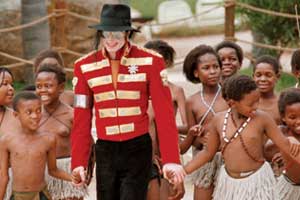Hey everyone, I’m Lindsay Lohan, and this is Lindsay Lohan’s Indian Journey (BBC3). India’s, like, this crazy place in maybe Asia? The people are sooo cute, and real skinny. Also they’re mad drivers like me – maybe they all do tons of cocaine too. But this isn’t about drugs or driving (for once!). Or who I’m dating or not dating. It’s about child trafficking, which is this massive issue out here.
That is not the opening voice-over of Lindsay Lohan’s Indian Journey, but the more puerile of two scathing Guardian articles (plus a blog item) about it within the last seven days. Alright, it’s weird that LiLo is the host of a BBC documentary about child trafficking. And the inarticulateness in the clip below isn’t even the least compelling commentary she offers during the course of the film:
Still. I’m going to have to side against the haters on this one. I’m not really qualified to judge whether Lohan is genuinely interested in learning about child trafficking or is using the issue to scrub her ditsy image, but even the latter still does the service of raising awareness. In the doc, we go to the slums; we look at how globalization and economic “progress” have exacerbated demand for underage slaves. We meet children whose parents give them up to traffickers for the extra income, sometimes repeatedly, talk with very young rape victims, hear more kids talking about being beaten than we can count. “In fact, it would be [hard] to argue that the BBC had produced a bad documentary here,” admits the Independent. “Who knows what their motive for choosing Lohan as their star was? To raise awareness among a demographic—supermarket-tabloid readers—who wouldn’t otherwise have taken an interest? To generate publicity? To boost ratings?”
Well, yes. Consider how many more people watched Lindsay Lohan’s Indian Journey than would have Learn About Child Trafficking With John Davies. Who? Right. As I’ve mentioned before, Thailand, for example, has a problem with abusing refugees, but it took Angelina Jolie’s involvement for the issue to really explode into the news. And I’m gonna guess, that these two stories snarking about Lohan is way more headlines than the Guardian gives child trafficking in a typical week.

















